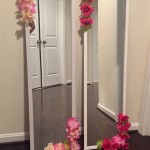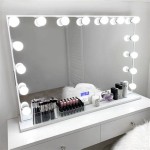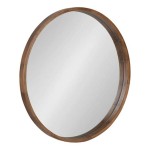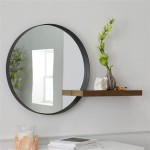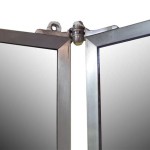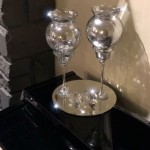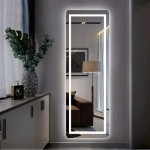French Antique Mirrors: History, Styles, and Design
French antique mirrors are renowned for their exquisite craftsmanship, timeless designs, and historical significance. These mirrors not only reflect light and expand spaces but also add a touch of elegance and grandeur to any interior. Here is a comprehensive guide to the essential aspects of French antique mirrors:
History and Origins
The origins of French antique mirrors can be traced back to the 16th century, when Venice dominated the glassmaking industry. Artisans in France began to imitate Venetian techniques, and by the 17th century, French mirror-making had flourished. The reign of Louis XIV marked a golden age for mirror production, as they became an essential element of palatial interiors.
Styles and Designs
French antique mirrors come in a wide range of styles, each reflecting the prevailing design trends of its time. Here are some notable styles:
- Louis XIV (1643-1715): Characterized by ornate frames with heavy scrollwork, acanthus leaves, and gilding.
- Louis XV (1715-1774): More delicate and graceful with asymmetrical rococo frames featuring C- and S-curves.
- Louis XVI (1774-1792): Inspired by neoclassicism, these mirrors have simpler frames with geometric patterns and clean lines.
- Empire (1804-1814): Bold and majestic, these mirrors often feature military motifs, such as eagles and laurel wreaths.
- Restoration (1814-1830): A revival of Louis XVI style, with a focus on balance and symmetry.
Materials and Techniques
French antique mirrors are typically made of high-quality glass, which is blown and shaped by experienced artisans. The frames are crafted from various materials, including:
- Wood: Used for most frames, woods like oak, walnut, and mahogany were common.
- Gesso: A mixture of plaster and glue applied to wood to create an even surface for gilding.
- Water gilding: A traditional technique where gold leaf is applied to a gesso surface with water and a brush.
- Ormolu: A gilded brass alloy used to adorn frames with intricate details.
Uses and Significance
French antique mirrors have played a significant role in interior design for centuries. They serve both practical and decorative purposes:
- Reflecting light: Mirrors expand spaces and brighten rooms by reflecting natural and artificial light.
- Creating illusions: Large mirrors can make small rooms appear larger and enhance depth.
- Adding elegance: Ornate mirrors elevate interiors and add a sense of grandeur and opulence.
- Historical value: Antique mirrors are treasured as valuable collectibles and offer a glimpse into past design and craftsmanship.
Care and Restoration
Preserving the beauty and longevity of French antique mirrors requires proper care and maintenance:
- Avoid direct sunlight: Prolonged exposure to sunlight can damage the glass and frame.
- Clean gently: Use a soft, dry cloth to wipe away dust and dirt. Avoid harsh chemicals or cleaning solutions.
- Protect from moisture: Keep mirrors away from humid environments, as moisture can cause warping and tarnishing.
- Seek professional restoration: For major damage or antique mirrors in need of restoration, consult with a qualified professional.

French Mirror 1 In Stock 7 Feet Tall Baroque Rococo Antique Vintage Gold Leaf Furniture Interior Design

Antique French Mirrors

677 Antique French Mirrors For Ingantiques Co

Gold And Silver French Mirror Crown Colony Antiques In Fairhope Al

Antique Mirror French Oval Gilt Gesso Ornate For At Pamono

French Mirror Large 88h X 43w Baroque Rococo Antique Gold Leaf Furniture Interior Design

Antique Mirrors In A Bathroom Adding Charm Character

Antique French Gold Leaf Gilt Louis Philippe Mirror With Crest

French Mirror Baroque Rococo Antique 5 Feet Tall Gold Leaf Furniture Interior Design

Large Antique French Mirror 424787 Antiques

